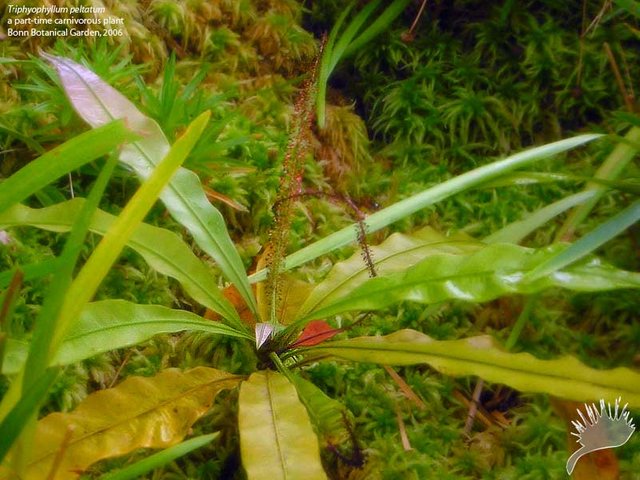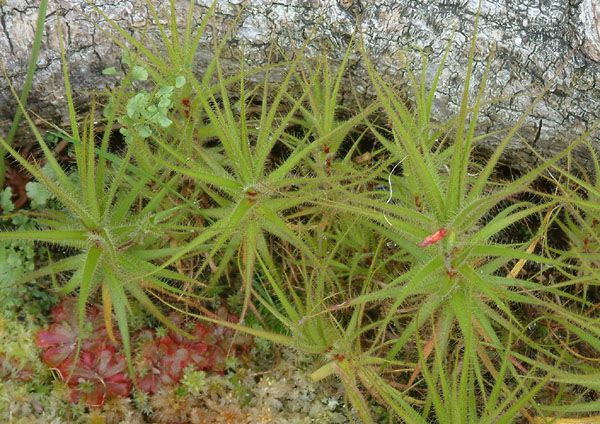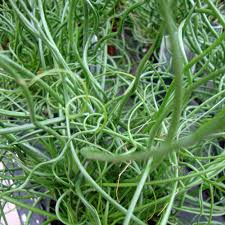Tropical pitcher plant

The main thing that distinguishes the tropical pitcher plant, genus Nepenthes, from other carnivorous vegetables is its scale: the "pitchers" of this plant can reach over a foot in height, ideal for capturing and digesting not only insects, but small lizards, amphibians, and even mammals. The doomed animals are attracted by the plant's sweet scent, and once they fall into the pitcher digestion can take as long as two months! There are about 150 Nepenthes species scattered around the eastern hemisphere; the pitchers of some are used as drinking cups by monkeys (which are too large to find themselves on the wrong end of the food chain).
Cobra Lily

So named because it looks like a cobra about to strike, the cobra lily, Darlingtonia californica, is a rare plant native to the cold-water bogs of Oregon and northern California. This plant is truly diabolical: not only does it lure insects into its pitcher with its sweet smell, but its closed pitchers have numerous, see-through false "exits" that exhaust its desperate victims as they try to escape. Oddly enough, naturalists have yet to identify the natural pollinator of the cobra lily; clearly, some type of insect gathers this flower's pollen and lives to see another day, but it's unknown precisely which.
Trigger Plant

Despite its aggressive-sounding name, it's unclear if the trigger plant (genus Stylidium) is genuinely carnivorous, or simply trying to protect itself from pesky insects. Some species of trigger plants are equipped with "trichomes," or sticky hairs, which capture small bugs that have nothing to do with the pollination process — and the leaves of these plants secrete digestive enzymes that slowly dissolve their unfortunate victims. Pending further research, though, we don't know if trigger plants actually derive any nutrition from their small, wriggling prey, or are simply dispensing with unwanted visitors.
Tryphiophyllum

A species of plant known as a liana, Tryphiophyllum peltatum has more stages in its life cycle than Ridley Scott's alien. First, it grows unremarkable-looking oval-shaped leaves; then, around the time it flowers, it produces long, sticky, "glandular" leaves that attract, capture, and digest insects. And lastly, it becomes a climbing vine equipped with short, hooked leaves, sometimes attaining lengths of over a hundred feet. If this sounds creepy, there's no need to worry: outside of greenhouses specializing in exotic plants, the only place you can encounter T. peltatum is in tropical west Africa.
Portuguese Sundew
The Portuguese Sundew, Drosophyllum lusitanicum, grows in nutrient-poor soil along the coasts of Spain, Portugal and Morocco — so you can forgive it for supplementing its diet with the occasional insect. Like many other carnivorous plants on this list, the Portuguese sundew attracts bugs with its sweet aroma; traps them in a sticky substance, called mucilage, on its leaves; secretes digestive enzymes that slowly dissolve the unfortunate insects; and absorbs the nutrients so it can live to flower another day. (By the way, Drosophyllum has nothing to do with Drosophila, better known as the fruit fly.)
Roridula

Native to South Africa, Roridula is a carnivorous plant with a twist: it doesn't actually digest the insects it captures with its sticky hairs, but leaves this task to a bug species called Pameridea roridulae, with which it has a symbiotic relationship. What does Roridula get in return? Well, the poop of P. roridulae is especially tasty and rich in nutrients, making it a superb fertilizer. (By the way, 40-million-year-old fossils of Roridula have been discovered in the Baltic region of Europe, a sign that this plant was much more widespread during the Cenozoic Era than it is now.)
Butterwort
.jpg)
So called because its broad leaves look like they've been coated with butter, the butterwort (genus Pinguicula) is native to Eurasia and North, South and Central America. Rather than emitting a sweet smell, butterworts attract insects that mistake the pearly secretions on their leaves for water, at which point they get mired in the sticky goo and are slowly dissolved by digestive enzymes. You can often tell when a butterwort has had a good meal by the hollow insect exoskeletons, made out of chitin, left on its leaves after their insides have been sucked dry.
Corkscrew Plant
.jpg)
Unlike the other plants on this list, the corkscrew plant (genus Genlisea) doesn't much care for insects; rather, its main diet consists of protozoans and other microscopic animals, which it attracts and eats using specialized leaves that grow under the soil. (These underground leaves are long, pale and rootlike, but Genlisea also has more normal-looking green leaves that sprout above ground and are used to photosynthesize light). Technically classified as herbs, corkscrew plants inhabit the semi-aquatic regions of Africa and Central and South America.
Hi! I am a robot. I just upvoted you! I found similar content that readers might be interested in:
https://www.thoughtco.com/plants-that-eat-animals-4118213
Downvoting a post can decrease pending rewards and make it less visible. Common reasons:
Submit
@therealwolf 's created platform smartsteem scammed my post this morning (mothersday) that was supposed to be for an Abused Childrens Charity. Dude literally stole from abused children that don't have mothers ... on mothersday.
https://steemit.com/steemit/@prometheusrisen/beware-of-smartsteem-scam
Downvoting a post can decrease pending rewards and make it less visible. Common reasons:
Submit